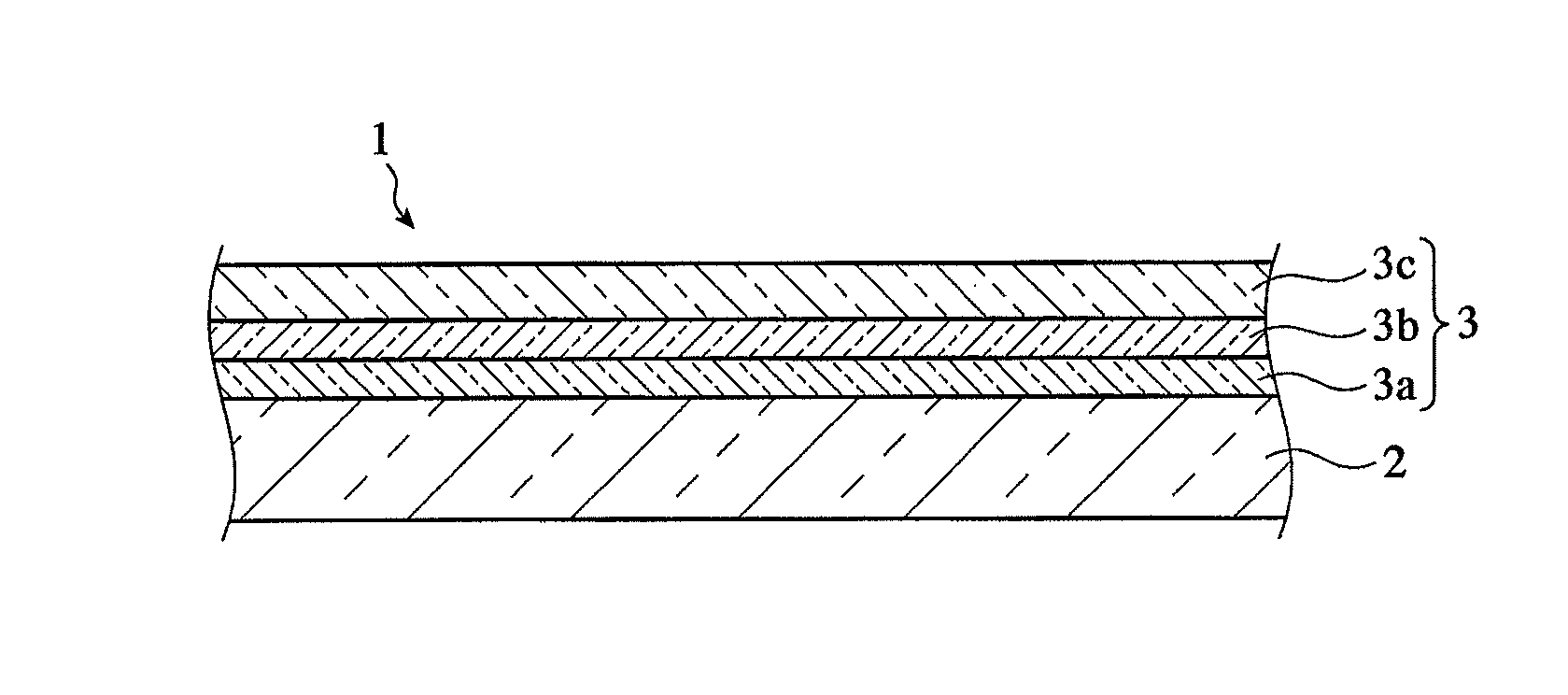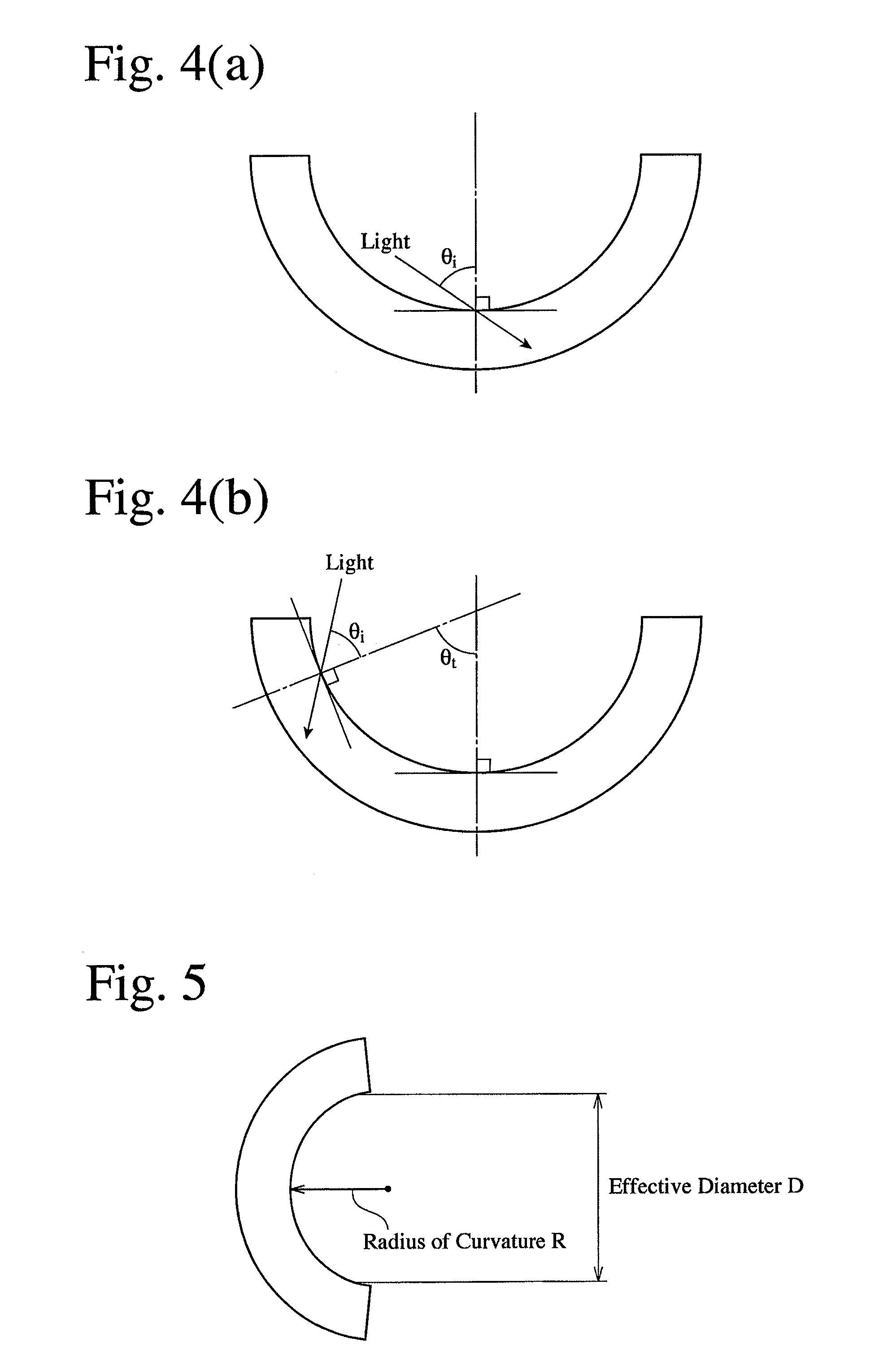Anti-reflection Coating and Optical Member Comprising Same
- Summary
- Abstract
- Description
- Claims
- Application Information
AI Technical Summary
Benefits of technology
Problems solved by technology
Method used
Image
Examples
example 1
[0151]A first layer of MgF2, a second layer of Ta2O5+Y2O3+Pr6O11, and a third layer of silica aerogel were formed to the optical thickness shown in Table 1 on a flat glass plate of LaSF010 (refractive index: 1.839), to produce each Sample a to g. Because each of the first and second layers formed on a lens substrate having a large maximum inclination angle becomes gradually thinner as it goes from the center toward the periphery (as the inclination angle becomes larger) as shown in FIG. 2, the thickness of the first and second layers in each Sample a to g was set equal to the thickness at a lens substrate inclination angle of 0°, 10°, 20°, 30°, 40°, 50° and 60°, respectively, and the thickness of the third layer was set constant, to evaluate anti-reflection performance at each inclination angle of the lens substrate.
TABLE 1-1LayerMaterialRefractive IndexSubstrateLaSF0101.839FirstMgF21.388LayerSecondTa2O5 + Y2O3 + Pr6O112.055LayerThirdSilica Aerogel1.270Layer
TABLE 1-2Optical Thicknes...
example 2
[0180]A first layer of SiO2 (refractive index: 1.469), a second layer of Ta2O5+Y2O3+Pr6O11 (refractive index: 2.055), a third layer of SiO2 (refractive index: 1.469) and a fourth layer of silica aerogel (refractive index: 1.250) were formed to each optical thickness shown in Table 5 on a flat glass plate of LaSF010 (refractive index: 1.839) by the same method as in Example 1, to produce Samples a to g. To evaluate the anti-reflection performance of an anti-reflection coating on a lens substrate having a large maximum inclination angle as shown in FIG. 7 at each substrate inclination angle, each of Samples a to g comprised first to fourth layers formed on a flat glass plate at thickness corresponding to the thickness of each layer at a lens substrate inclination angle of 0°, 10°, 20°, 30°, 40°, 50° and 60°, the first to third layers becoming gradually thinner from Sample a to Sample g, and the fourth layer having a constant thickness.
TABLE 5-1LayerMaterialRefractive IndexSubstrateLaS...
PUM
| Property | Measurement | Unit |
|---|---|---|
| Angle | aaaaa | aaaaa |
| Nanoscale particle size | aaaaa | aaaaa |
| Thickness | aaaaa | aaaaa |
Abstract
Description
Claims
Application Information
 Login to View More
Login to View More - R&D
- Intellectual Property
- Life Sciences
- Materials
- Tech Scout
- Unparalleled Data Quality
- Higher Quality Content
- 60% Fewer Hallucinations
Browse by: Latest US Patents, China's latest patents, Technical Efficacy Thesaurus, Application Domain, Technology Topic, Popular Technical Reports.
© 2025 PatSnap. All rights reserved.Legal|Privacy policy|Modern Slavery Act Transparency Statement|Sitemap|About US| Contact US: help@patsnap.com



